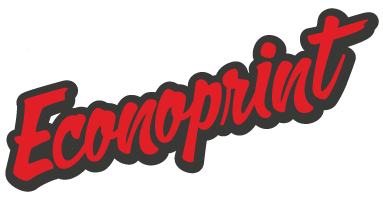
5 ESSENTIAL WEBSITE ELEMENTS
Share
Launching a new business is exciting, but if your website isn’t built for success, you might be losing customers before they even get to know you. A great startup website isn’t just about looking good—it’s about attracting visitors, building trust, and converting them into paying customers.
So, what separates a forgettable website from one that works 24/7 to grow your business? Let’s dive into five must-have elements for a high-performing startup website, each backed by real-world stories to drive the point home.
Tip #1: A Clear and Compelling Value Proposition
Story: Imagine you land on a website, and within seconds, you’re confused. The business name sounds interesting, but what do they actually do? You scroll, trying to figure it out—nothing. Frustrated, you leave. Now, compare that to landing on a site that greets you with a bold, clear statement: “Custom Websites Built in 5 Days – Without the Hassle.” Instantly, you know what they do, who they help, and why it matters.
Lesson: Your website’s headline and subheadline should communicate three things immediately:
✅ What you do
✅ Who you help
✅ Why it matters
Best Practices:
- Keep it short and clear (one sentence is best)
- Focus on how you solve a problem for your audience
- Place it above the fold (visible without scrolling)
Example: A startup offering eco-friendly packaging might have a homepage that says, “Sustainable Packaging That Saves You Money and the Planet”—immediately grabbing the right audience’s attention.
Tip #2: Strong Calls-to-Action (CTAs) That Convert
Story: A bakery startup launches its website with beautiful images and a great backstory. But there’s one problem: visitors have no idea what to do next. There’s no “Order Now” button, no “Join Our Mailing List” prompt—just text and images. Meanwhile, their competitor has a clear “Get Fresh Pastries Delivered – Order Now” button that stands out on every page. Guess who gets more sales?
Lesson: Your website should guide visitors toward taking action.
Best Practices for CTAs:
- Use clear, action-oriented language (e.g., “Book a Free Call” instead of “Submit”)
- Make buttons bold and easy to find
- Include multiple CTAs throughout the site (don’t rely on just one!)
Example: A fitness coach’s website might have CTAs like “Start Your Free Trial Today” or “Download Your 7-Day Meal Plan”—enticing and specific.
Tip #3: Mobile-Friendly and Fast-Loading Design
Story: A new restaurant launches a gorgeous website with full-screen videos and high-resolution images. But when a potential customer tries to check the menu on their phone, the site takes forever to load, and the text is too small to read. Frustrated, they bounce and order from a competitor instead.
Lesson: More than 60% of website traffic comes from mobile devices. If your site isn’t mobile-friendly and fast, you’re losing customers—period.
Best Practices:
- Use a responsive design that adjusts for any screen size
- Optimize images and videos to load quickly
- Test your site’s speed with tools like Google PageSpeed Insights
- Avoid pop-ups that block mobile screens (Google penalizes this!)
Example: A travel agency might use fast-loading image sliders instead of autoplaying videos to keep the site engaging without sacrificing speed.
Tip #4: Trust-Building Elements (Reviews, Testimonials, and Security Badges)
Story: Two freelance graphic designers launch their websites. One has a sleek portfolio but no reviews. The other showcases glowing testimonials from past clients, a Google Reviews badge, and a “Trusted by 500+ Businesses”statement. Guess which one gets more inquiries?
Lesson: People buy from businesses they trust. If visitors don’t feel safe or confident in your brand, they won’t convert.
Must-Have Trust Elements:
✅ Customer testimonials and reviews (bonus: video testimonials)
✅ Trust badges (e.g., SSL security, “As Seen On” media features)
✅ Clear contact information (a real address and phone number build credibility)
Example: A startup selling organic skincare could display a “Dermatologist-Approved” badge and feature testimonials from happy customers to boost trust.
Tip #5: An SEO-Optimized Blog to Attract Organic Traffic
Story: A small accounting firm struggles to get clients. They launch a website but barely get any visitors. Then, they start a blog, writing about tax tips for small businesses and ranking on Google for key search terms. Within months, their traffic and leads skyrocket.
Lesson: A well-optimized blog is a free, long-term marketing machine that brings in potential customers organically.
SEO Blog Best Practices:
- Write about topics your audience searches for (use Google’s “People Also Ask” section for ideas!)
- Include keywords naturally in headlines and text
- Optimize images and meta descriptions
- Post consistently (even once a month is better than nothing!)
Example: A personal trainer might write a blog post titled “5 Exercises to Lose Belly Fat (Backed by Science)”, targeting searches and bringing new visitors to their site every day.
Final Thoughts: A Website That Works for Your Business
Your startup’s website isn’t just a digital business card—it’s your most powerful marketing tool. By including:
- A clear value proposition so visitors instantly know what you do
- Strong calls-to-action that drive conversions
- A mobile-friendly, fast-loading design for a seamless experience
- Trust-building elements that reassure customers
- An SEO-optimized blog to attract organic traffic
- …you create a website that doesn’t just sit there—it actively helps your business grow.
🚀 Is your startup’s website working as hard as you are? If not, it’s time for a revamp!
